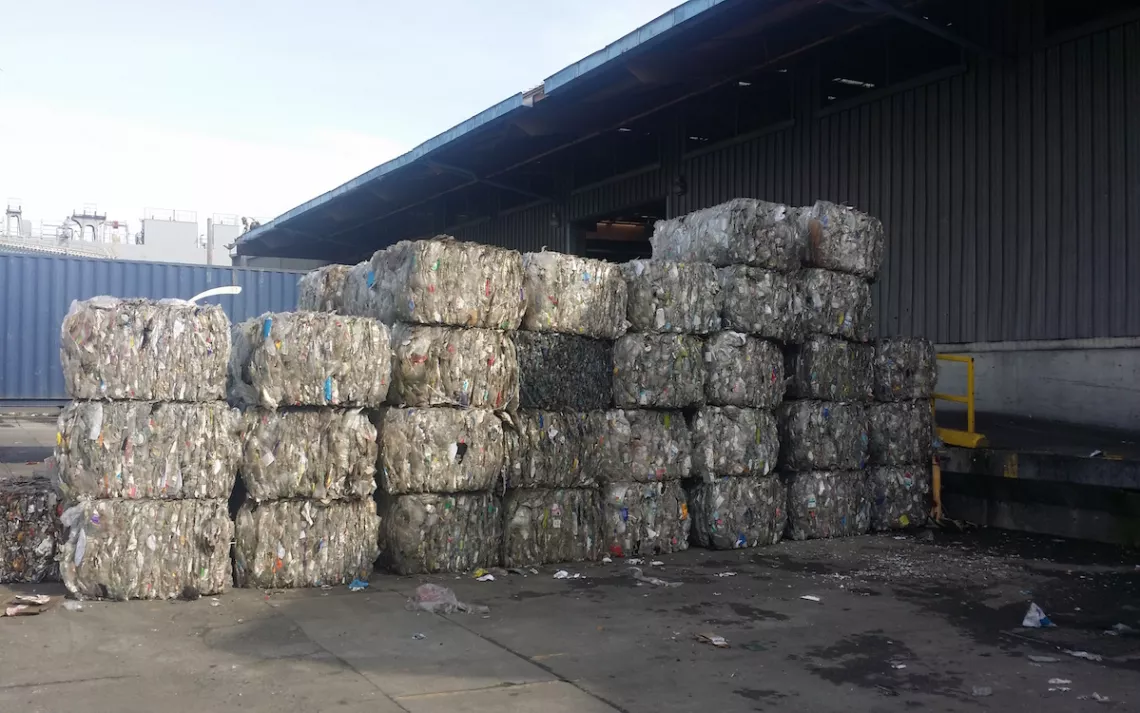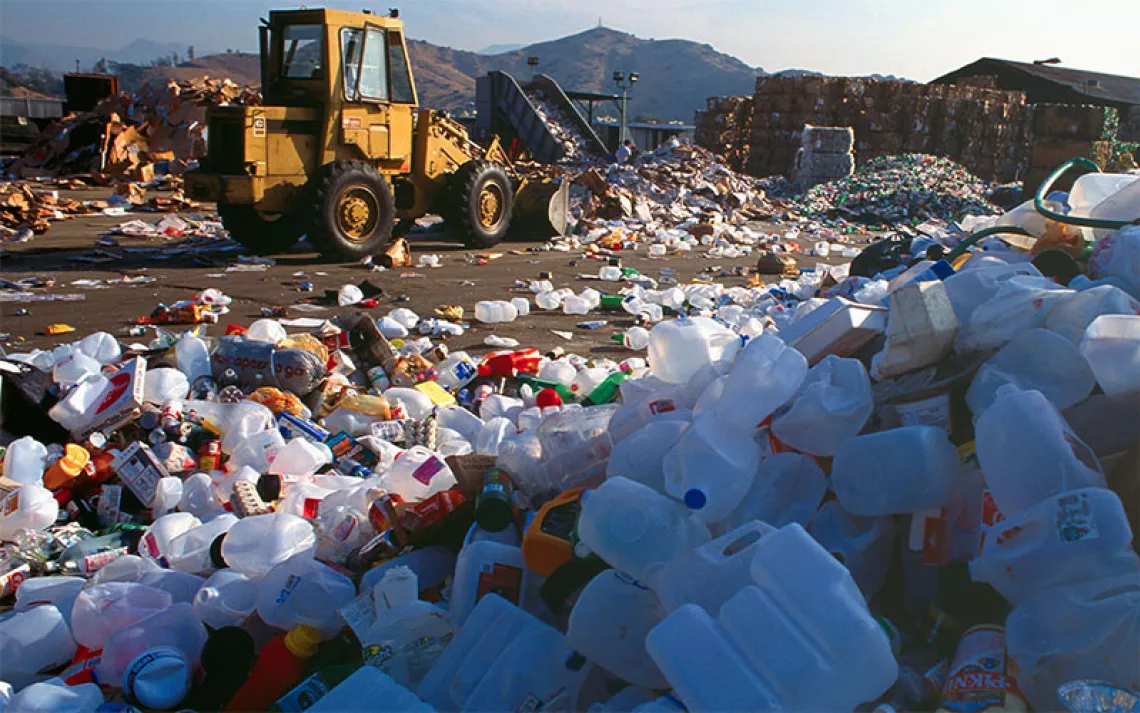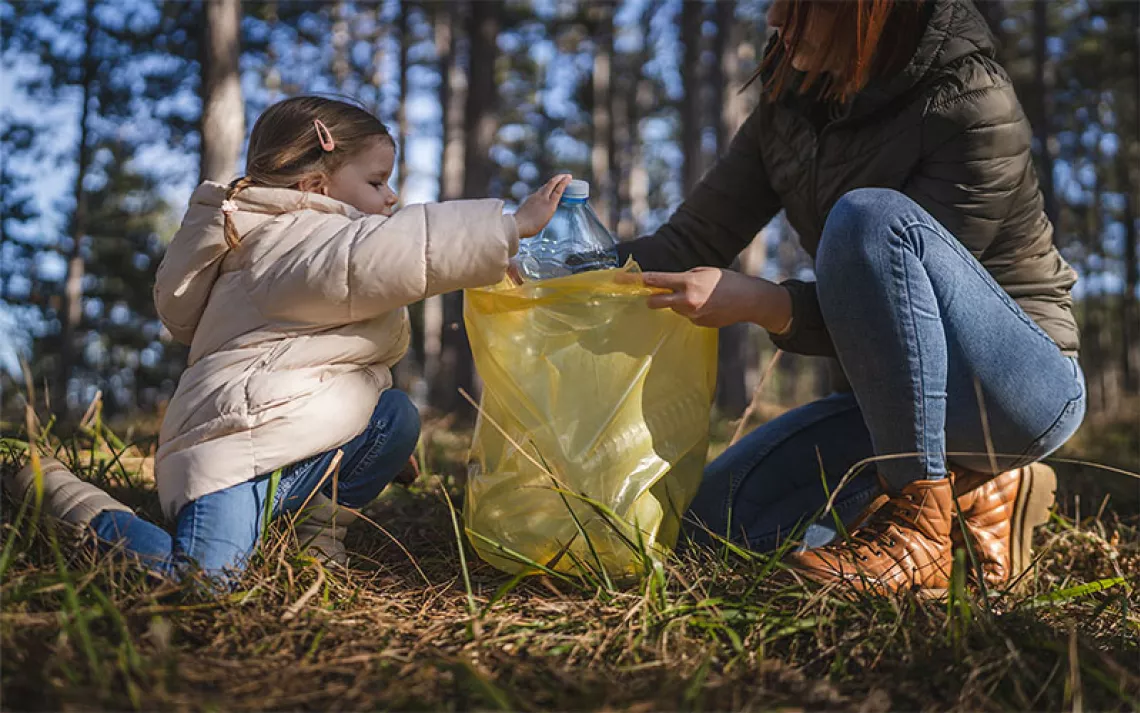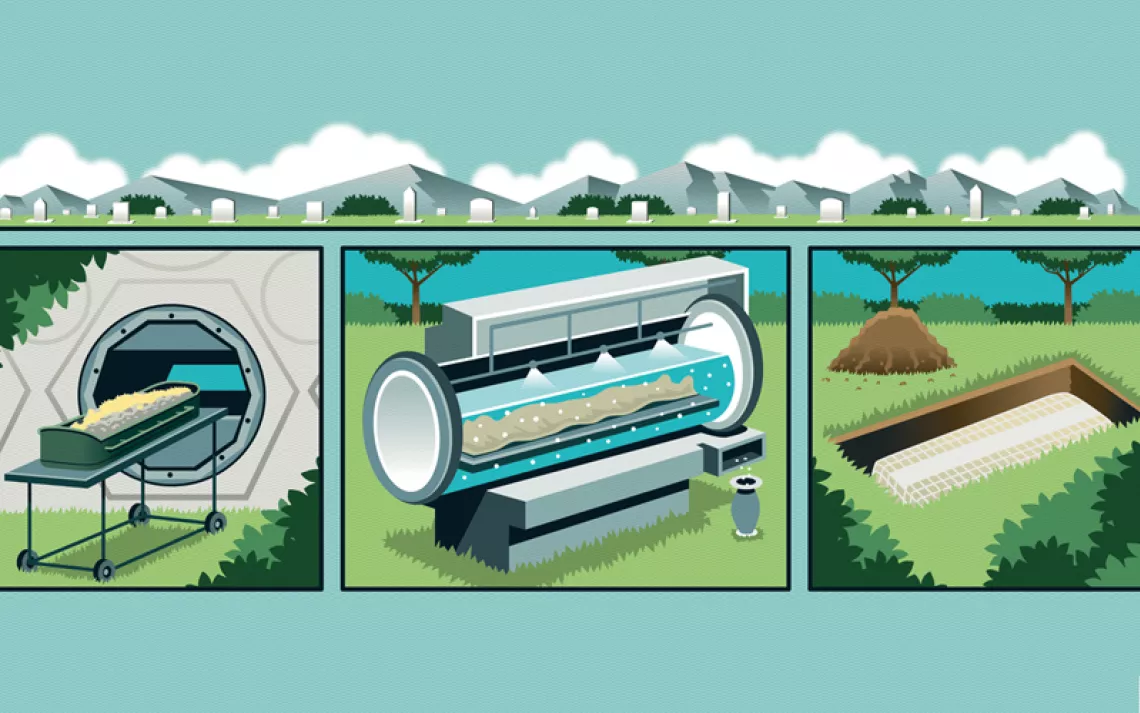Plastic Waste Piles Up as China’s Ban Goes Into Effect
What will the U.S. do now with the plastic China won’t take?

Photos courtesy of Recology
If you were at Dolores Park in San Francisco last weekend enjoying a bottle of water, chances are the bottle ended up at Pier 96 not long after you tossed it into a recycling bin. That’s where much of the city’s discarded recycling waste piles up—in giant bales of neatly bound cardboard and plastic scrap, sitting in an empty parking lot just off the pier. The cardboard bales will be shipped off to China in a shipping container for recycling. The plastic water bottles and other scrap will continue to sit there, however, waiting for another country willing to take them.
That’s because China has decided to crack down on the quality of plastic scrap imported from overseas—the yang la-ji, a crass, blanket term government officials have been calling imported scrap. It translates literally to “foreign trash.”
In July 2017, China filed a notice with the World Trade Organization announcing its decision to stop importing 24 types of foreign waste and to dramatically tighten its standards for impurities in scrap bales. In the official notice, China’s Ministry of Environment Protection said, “We found that large amounts of dirty wastes or even hazardous wastes are mixed in the solid waste that can be used as raw materials. This has polluted China’s environment seriously.”
Before the announcement, China allowed 5 percent of impurities in imported bales of plastic. The new, 0.5-percent threshold has proven impossible for U.S. facilities in the short-term, leaving recycling operators scrambling for alternatives.
“We worked hard to make sure our bales contain less than 5 percent of impurities, and sometimes lower than 4,” said Robert Reed, who is part of the team that runs Recology San Francisco near Pier 96.
The ban went into effect in 2018, with a transitional period of five months for its scrap trade partners. WTO members that rely heavily on China’s role in the international waste trade protested in meetings following the announcement; the United States, the E.U., Japan, Australia, and Canada all asked for a longer transitional period of up to five years.
China is already carrying out the ban anyway, which has caused a flurry of panic through the international waste trade. “China practically gave us no time to adjust, no time to transition,” said Adina Adler, a senior official at the Institute of Scrap Recycling Industries. It takes at least two months for a scrap shipment to go from the United States to China; the last bales that the U.S. was able to get out of the country without facing rejection at China’s ports were shipped from September to October, making the ban effective three months after the announcement.
The lack of instructions from China also didn’t help. There is scrap piling up in storage facilities on the West Coast, waiting to be redirected to domestic or foreign facilities, or waiting indefinitely for the regulations to relax. This in turn is taking a toll on the facilities’ budgets; some have informed local residents that they are no longer taking in plastic items and that plastic has been going to landfill instead, according to Adler.
In the official notice China filed with the WTO, the banned types of scrap include “plastics waste from living sources, vanadium slag, unsorted waste paper, and waste textile materials.” But no further explanation was given, and there were no clear examples for exporting facilities on what they are allowed to ship and what they aren't. The government has also announced a plan to completely ban plastic waste imports in 2019.
China became the world’s main solid waste importer in the 1980s, when it needed cheap raw materials to feed its growing economy. But in recent years, the government has pointed to environmental damage caused by the trade and unwonted smuggling of illegal scraps. China hasn’t made clear exactly what it means by environmental damage. However, one of the heaviest polluted regions in China, Guiyu, a small town in the Guangdong Province, is said to take in the most electronic waste in the world. Once primarily reliant on rice-planting before 1995, the coastal village had transformed into a huge e-waste processing hub by 2013 for economic reasons. Rice no longer grew because the water and air became severely polluted from burning plastic.
In 2013, officials launched the Green Fence campaign, which prohibited unsorted shipments of recyclables from overseas. In March 2017, China also launched the National Sword initiative, a project that led to detailed investigations at nine major ports known for the daily incoming cargo of foreign scrap.
“In periods of development in the past, parts of imported solid waste have served (China) to some extent, but as China advances economically and socially, we see problems exposed in importing solid waste for raw materials,” said Guo Jiang, the head of the environment protection ministry’s Department of International Cooperation. “Especially the yang la-ji. Everyone has something negative to say about it.”
The United States in particular has been hit hard by the ban, thanks to a lack of domestic plastic processing facilities nationwide. There hasn’t been a new recycling plant built in the U.S. since 2003. Meanwhile, Americans throw away an average of 35 billion plastic bottles every year. Up to 40 percent of U.S. scrap exports used to go to China. What happens next?
For now, your bottle and its plastic companions are going to Vietnam or Malaysia. Scrap exports from September 2017 through January 2018, compared to the same period of time in 2016, shows a 95 percent increase of scrap paper going to Vietnam, and a 138 percent increase in plastic scrap going to Malaysia. For that same period, there was a 17.8 percent drop in plastic scrap export from the United States to China.
“We are working very hard with the city of San Francisco and our customers to meet China’s new standards, but after November 2017, our plastic bales have been redirected to Southeast Asia,” said Reed, who hopes that the Chinese government will relax its new regulations.
Inside China, the scrap industry is also seeing fissures after the government crackdown. China’s Ministry of Environmental Protection investigated 1,800 recycling facilities last year to see if they followed environmental laws regarding imported scrap, but over half were found to be violating said laws. “These companies either went out of business or lost their import licenses temporarily,” said Adler. This also contributed to the chaos in the global scrap trade, because these licenses not only gave the facilities permission to import foreign scrap, they also determined how much each facility is allowed to import. Once taken away, the losses are huge.
Even more companies were denied licenses this year, said Steve Wong, the owner of the plastic recycling company Fukutomi in Hong Kong. “The number of the first batch of import permits granted in 2018 was released at the end of December. The number is down by nearly 95 percent in comparison to last year,” said Wong.
There is still no official plan on how to deal with the excess scrap piling up in places like San Francisco’s Pier 96, but recyclers are trying to identify domestic options rather than going overseas. “There are resources in the U.S. and Canada that people are starting to scout out now,” said Adler.
Wong agrees. “The amount Southeast Asian countries are taking is small compared to what the U.S. is used to exporting. I’m planning to open a facility in the U.S. to help combat the problem.”
 The Magazine of The Sierra Club
The Magazine of The Sierra Club



